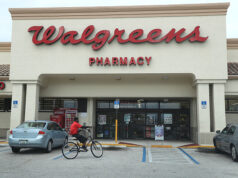This article is part of”Rising Up,” a special report first published in the October 2019 issue of Healthcare Design, where sustainability leaders shed light on the top environmental design challenges affecting the industry, their input, and solutions necessary to solve them.
Here, Kim Shinn, principal wizard at TLC Engineering Solutions (Nashville), discusses the challenge of proving the value of green building certification in healthcare and why it’s important.
Sustainable design challenge: Some healthcare system owners ask for projects to be designed and constructed to LEED standards, but not to go through with certification. Owners follow this “LEED-lite” path because they, mistakenly, believe that the modest cost of certification is not worth the return on investment (ROI). However, it’s important to note that the current cost of LEED registration and certification reviews is less than 75 cents per square foot of conditioned area. That’s less than three-tenths of one percent of an even modestly priced MOB project—it’s a rounding error.
Why it’s an issue: Without the rigor of third-party review and certification, projects inevitably will fall short of the LEED criteria in the various fields of construction waste management, material transparency, indoor environmental quality, habitat restoration and preservation, and water and energy performance. Additionally, independent third-party reviewers are not susceptible to the pressures of schedule and budget, as are the team members. It’s simply too easy, convenient, and, frankly, human to take a path of lesser resistance when faced with an obstacle.
For example, let’s say specifications call for a finish system to disclose its material ingredients and a particular finish system that has this documentation has a delivery time of six weeks but the project schedule is only five weeks from completion. It’s all too easy to substitute another option with a four-week delivery but that doesn’t have the material disclosure documentation.
Projects that fail to meet the LEED criteria simply will not perform as well as a LEED-certified project. And falling short means that these uncertified (and uncertifiable) projects have the greater potential to degrade the environment, adversely affect their occupants and users, and consume more non-renewable resources, such as energy and water, than their LEED counterparts.
The solution: Invest in third-party certification. Invest is the operative word because projects do get a return on that investment. Some returns, particularly in water and energy, are more tangible than others because they impact the bottom line. But projects also will get returns in healthier environments for staff, patients, and visitors through better access to daylight and views to nature; fewer toxic chemicals in finishes and furnishings; and quieter, acoustically calmer rooms and corridors.
Another rumor often heard in arguments against the value of certification is that LEED requires project teams to expend more work on documentation. This is simply not true if the project team is performing the scope of work required by contract. LEED requires essentially no more submittal documentation than is required for a licensing or code review, or in shop drawing review, and in many cases less than is required in some more rigorous jurisdictions, such as California’s Office of Statewide Health Planning and Development or Florida’s Agency for Health Care Administration.
Another typical bogeyman is the expense of an energy model to assess energy performance or commissioning to confirm proper building operations before occupancy. With the rise of rigor of the energy code, particularly since the adoption of 2012 IECC and ASHRAE 90.1-2010, teams that don’t follow the performance path (where an energy model is used to demonstrate that the designed building uses less energy than a standard reference building) will invariably spend more of the owner’s money if they follow the prescriptive path.
Why? For inpatient occupancies in some climate zones, the code usually mandates higher-than-optimal envelope insulation values. These prescriptive insulation levels will trap heat inside the building during mild outdoor conditions, raising the air-conditioning energy. Instead, we find that energy modeling, particularly when used by the project team during early design, saves both capital and operating cost through reduction of envelope and system sizes, as compared to following design practices and rules-of-thumb that pre-date energy codes of the last decade.
Commissioning, including that of the envelope, is another place where the ROI has been well documented to have simple paybacks that are often less than a single year. In particular, the monitoring-based commissioning now in LEED v4 is a great tool for operations personnel to identify energy performance hiccups before they turn into unexpectedly high energy or water bills.
We practice in an industry that places a lot of stock in certifications. When you sit in your doctor’s office and look at the certificates on his or her walls, doesn’t it improve your confidence in the person’s abilities? How would it make you feel to find out your surgeon trained in a program that was modeled on an accredited program but decided to save money by not bothering with the accreditation? We should hold the same standards to building certification.







